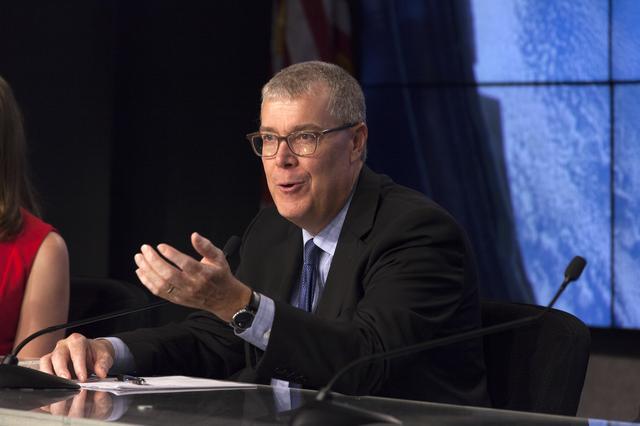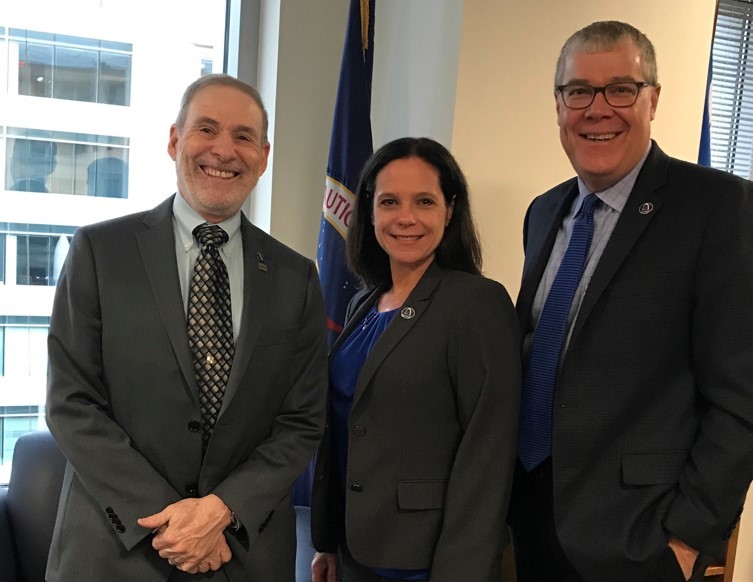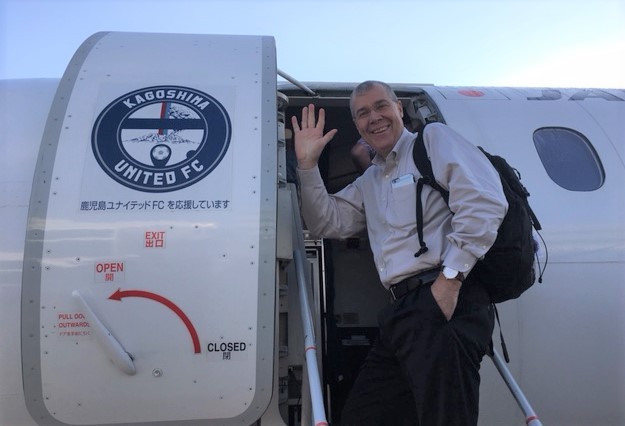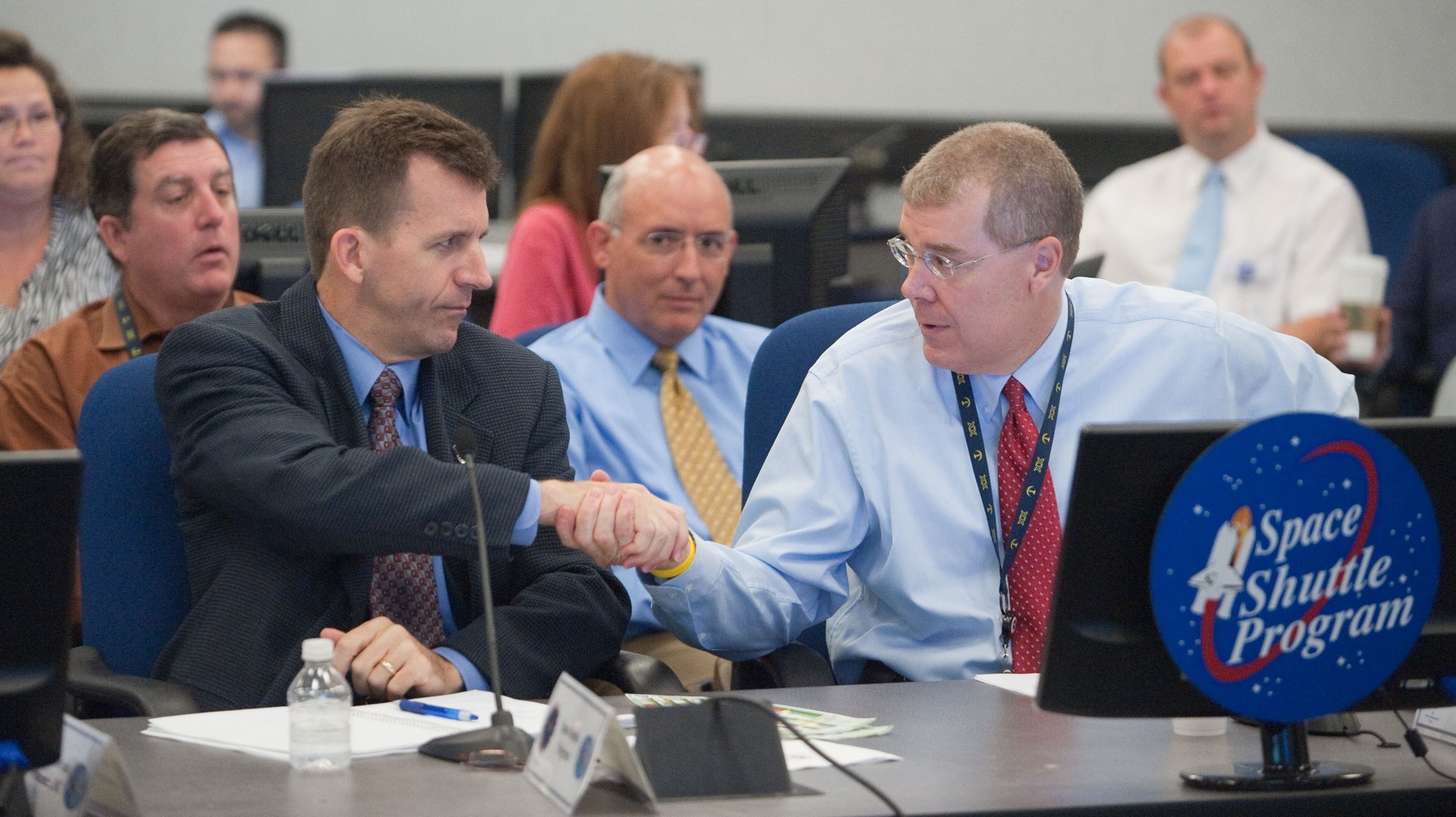Roundup Presents: The Directors Series (MA)
See You at the Moon
Dan Hartman has a job that would have seemed like the premise of a science-fiction novel only decades ago. He is responsible for building NASA’s lunar Gateway—essentially, an outpost in orbit around the Moon—to enable humans to establish a sustainable lunar presence with the Artemis program.
Hartman is program manager for the Gateway Program Office at NASA’s Johnson Space Center, a place he’s called home since joining the International Space Station (ISS) Program Office in 1994. Throughout his career, Hartman led major portions of the space station’s design, development and integration before serving as the ISS deputy program manager.
The experiences Hartman gained in space station have carried over to Gateway, where his team is exemplifying Johnson’s role as the global leader in human spaceflight by rapidly orchestrating the Gateway program to support NASA’s goal of landing humans on the Moon by 2024.

Hartman speaking at the SpaceX CRS press conference at NASA's Kennedy Space Center.
“A key job of the program is to assemble and integrate NASA, commercial and International Partner hardware to make sure that it’s a smooth-running machine,” Hartman said. “All these systems aggregate at the Gateway, stage by stage. We are moving forward as quickly as possible, leveraging lessons learned from ISS and other NASA programs to get our program up and running and to be ready for the challenges we know are coming.”
To accomplish NASA’s 2024 “boots on the Moon” directive, the program has increased its tempo by deciding to assemble the Gateway in multiple phases. NASA and commercial partners will provide the essentials for landing on the Moon during the first phase, and then leverage international partnerships to build out the Gateway to support longer missions in phase two.
During the first phase, commercial rockets will launch the Power and Propulsion Element (PPE) and the Habitation and Logistics Outpost (HALO), which will complete automated rendezvous and docking procedures in lunar orbit. Both of these systems will be integrated with components provided by international partners during this phase to prepare for phase two.

Hartman pictured with Gateway Deputy Program Manager Lara Kearney (middle) and associate administrator for the Human Exploration and Operations Mission Directorate Doug Loverro.
The PPE, which is developed by Maxar Technologies and based on a commercial satellite bus, and the HALO, which is built by Northrop Grumman and based on the Cygnus spacecraft used for delivering cargo to the space station, will provide the baseline structure for power, attitude control, communications and crew quarters during early lunar missions.
The PPE and HALO are prime examples of the new business models NASA is using to significantly accelerate the contracting process for Artemis. Partnering with Johnson’s Procurement Office and Office of Chief Counsel, Gateway is using a contracting method called Broad Area Announcements (BAAs), which allow NASA to award contracts more quickly. The timeframe for awarding contracts under BAAs has been significantly reduced from the typical 18 to 24 months for traditional contract mechanisms.
These new contracts will also employ a daring new strategy where the spacecraft is formally accepted by NASA in orbit, meaning that the contractor is responsible for delivering the element to the Moon. NASA then takes control of the spacecraft once the element successfully docks to the lunar outpost.
“We are essentially saying, ‘We’ll see you at the Moon,’” Hartman said. “We are employing a lot of new, novel techniques to cut down on cost, increase efficiency and help the commercial industry flourish.”
After the PPE and HALO have docked to form the first elements of Gateway, the next deliveries will be the lunar landing system, being developed at NASA’s Marshall Spaceflight Center, the Gateway Logistics Module from the Kennedy Space Center and the new exploration spacesuits. Then the Orion spacecraft is scheduled to arrive in 2024, carrying a crew of four astronauts.

Hartman boarding a plane to the HTV-6 launch in Tanegashima, Japan.
After arrival at the Gateway, two astronauts will descend to the lunar surface for an initial weeklong mission while the other members of the crew remain in orbit. Following the 2024 mission, the program is looking at an annual month-long human mission to the Gateway and around-the-clock utilization of the outpost for conducting research and technology demonstrations—even when a crew is not onboard.
Following the 2024 mission, international partners will launch elements that leverage capabilities developed aboard the space station to allow astronauts to remain in lunar orbit for longer missions. These include the International Habitation Module, supplied by ESA (European Space Agency) and the Japanese Aerospace Exploration Agency, and a robotic arm provided by the Canadian Space Agency. Discussions are underway with Russia to provide an airlock and other services.
“Gateway is leveraging the accomplishments of ISS and utilizing what our partners do best,” Hartman said. “We have bold plans, and are going to have to rely on everyone to pull this off. We can’t do it alone.”
While building the Gateway and landing astronauts on the Moon is a monumental endeavor that requires a global team, the program office managing the outpost’s architecture and integration is relatively small. Approximately 25 people were carefully curated from across the center for their wide array of knowledge and expertise in various programs and directorates. The mixture of experiences has enabled them to create a more efficient culture by critically assessing existing NASA processes and removing roadblocks to expedite decision making.
“We are extremely grateful to the host organizations for allowing talented folks to join the Gateway team,” Hartman said. "We are constantly challenging processes, changing the model and asking ‘Why?’ If something doesn’t add value, we aren’t doing it. We have to adapt. Change is hard, but necessary. We’re moving rapidly, all while taking measured risk.”

Hartman attending the final meeting of the Joint Mission Management Team between the Space Shuttle and International Space Station Programs.
As the program team moves full steam ahead to prepare for a 2024 mission, they also have their sights set on long-term success, preparing the program to operate with a mission operations mindset once initial construction is complete and crews begin regularly visiting the spacecraft. Gateway is largely autonomous, with embedded International interoperability standards to simplify integration and provide a growth path for expansion. It is being designed to operate for 15 years.
As the program continues to take shape and expand, one thing for certain is that decades of experience managing the orbiting laboratory and other human spaceflight programs has ensured that Johnson has the right stuff to lead NASA’s next great endeavor with Gateway.
“The team here at Johnson, other NASA centers, and our international and commercial partners have truly embraced the bold new challenge that Artemis has brought us,” Hartman said. “I don’t know if I have ever seen the passion and devotion at this center be higher. With 20 years of human habitation on ISS, commercial crew flights on the cusp, Orion undergoing testing for the Artemis I mission and a bold 2024 deadline, enthusiasm is universal and exciting.”
With a motivated team at NASA and across the world, the path to the Moon is imminent—and it goes right through Johnson.
Noah J. Michelsohn, Johnson Space Center

Dan Hartman is program manager for NASA's Gateway Program at NASA's Johnson Space Center . This story is the 19th and final edition of The Directors Series, highlighting Johnson’s mission of Dare. Unite. Explore. Find previous stories on the directors website.








